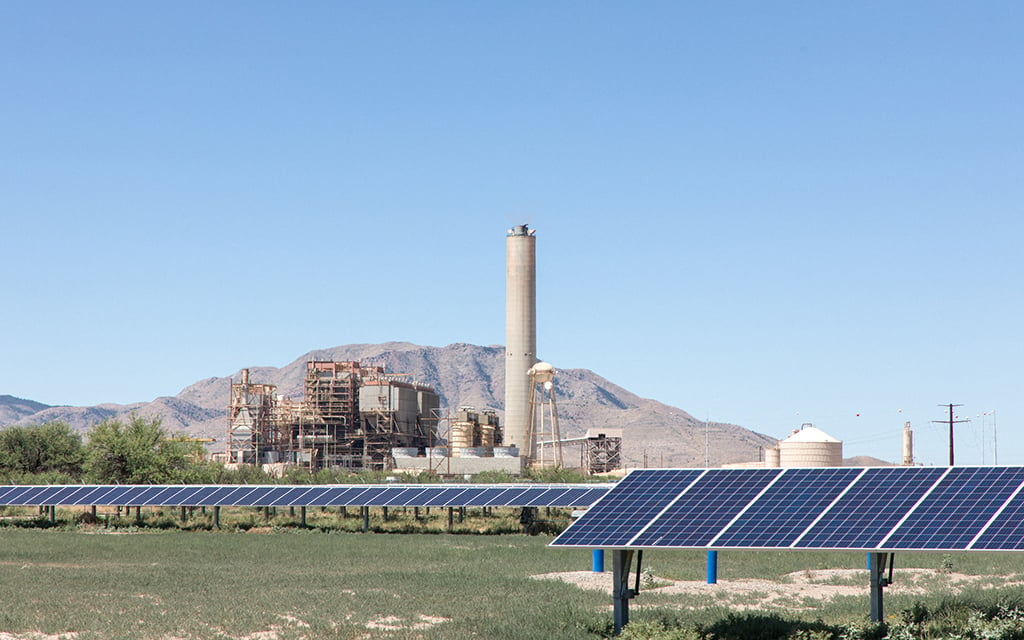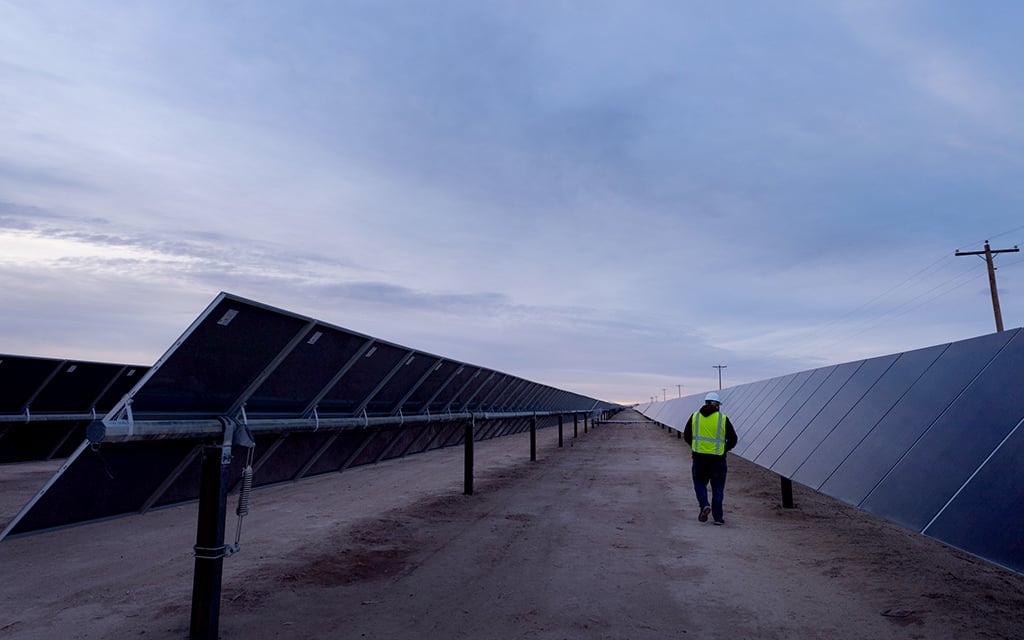
The EPA has said it intends to deny a request by Salt River Project to continue disposing coal ash from its Coronado Generating Station in St. Johns into an unlined pond. (Photo courtesy of SRP)
PHOENIX — The Environmental Protection Agency has notified Salt River Project that it plans to deny the utility’s request to continue dumping coal ash into an unlined pond at its Coronado Generating Station coal-fired plant in eastern Arizona.
It is one of six plants across the country targeted by the EPA for not complying with new environmental standards for disposing of coal ash, which is waste from coal-fired power plants. An additional plant, the Apache Generating Station in Benson, withdrew its application.
“EPA is holding facilities accountable and protecting our precious water resources from harmful contamination, all while ensuring a reliable supply of electricity to our communities,” EPA Administrator Michael S. Regan said in a news release on the action.
The proposal to deny the applications, submitted by the EPA Jan. 25, comes almost eight years after the agency announced new standards which mandated that utilities dispose of toxic coal ash only into reservoirs with a geocomposite liner, to prevent groundwater contamination and adverse effects on human health and the environment.
The standards announced in April 2015 were met with backlash from both environmental stakeholders and industry leaders. Some industry leaders felt that the standards went too far while some environmental stakeholders believed that they didn’t go far enough.
Following several lawsuits, the U.S. Court of Appeals for the D.C. Circuit issued its opinion in August 2018 in Utility Solid Waste Activities Group v. EPA. The court sided with environmental stakeholders and ruled that all unlined surface impoundments, or reservoirs, be closed.
Because of industry objections, the EPA subsequently allowed utilities to submit applications to prove that their power plants were using a safe surface impoundment to dispose of coal ash.
SRP filed an application on behalf of the Coronado Generating Station in November 2020. The EPA’s current proposal would deny SRP’s application. The agency wants the utility to demonstrate that 200 to 250 feet of natural clay beneath the Coronado facility functions the same as a synthetic liner and provides a protective barrier to the area’s groundwater.
Patty Garcia-Likens, a spokesperson with SRP, said the utility is disappointed in the EPA’s proposed decision and is evaluating information provided by the EPA that supports its proposed denial.
“SRP strongly believes the Coronado Generating Station evaporation pond meets all environmental requirements, and the 200 to 250 feet of natural clay beneath the facility functions the same as a synthetic liner and provides a protective barrier to the area’s groundwater,” Garcia-Likens said.

The Arizona Electric Power Cooperative withdrew its application for the Apache Generating Station because it received additional data that showed the plant had a lined facility per the EPA’s technical requirements. (Photo courtesy of Arizona Electric Power Cooperative)
Environmental activists and stakeholders praised EPA’s proposed denial. Sandy Bahr, director of Sierra Club’s Grand Canyon chapter, said that prohibiting the Coronado Generating Station from dumping toxic coal ash would protect the health and safety of Arizona and its residents.
“Coal ash is a toxic byproduct of burning coal. It contains heavy metals like arsenic, lead, mercury, selenium,” Bahr said. “These are all things that are either neurotoxins or carcinogens or both, meaning they contribute to cancer, they cause other health issues as well.
“We definitely do not want these contaminants in our groundwater. And we certainly don’t want them blowing around into the air as dust either,” she said.
Bahr said the EPA would not be proposing to deny SRP’s application if it believed that natural clay beneath the Coronado facility functioned as a safe surface impoundment.
“Big businesses and certainly big utilities do this all the time,” Bahr said. “They send things that say we’re special, we shouldn’t have to follow this, because we have this.”
Apache Generating Station, which is owned by the Arizona Electric Power Cooperative (AEPCO), also submitted an application intending to demonstrate that the utility was using a safe reservoir to dispose of ash materials at its plant near Benson. The cooperative withdrew its application June 13, 2022 because it received additional data that showed the plant had a lined facility per the EPA’s technical requirements, Freeark said. In its January news release, the EPA identified concerns about the Apache plant’s liner components and groundwater monitoring program.
According to Michelle Freeark, executive director of regulatory affairs and corporate services for AEPCO, the utility commissioned a third-party study which determined that its groundwater is safe and not impacted by the dumping of coal ash. Although those findings were provided to the EPA, they were not taken into consideration in the EPA’s recent statements “to our knowledge,” Freeark said.
The study will be provided in AEPCO’s 2022 Annual Groundwater Monitoring and Corrective Action Report on its website March 1, she said. In the meantime, Freeark said AEPCO will cooperate with the EPA in a joint effort to meet the agency’s environmental standards.
“AEPCO is committed to environmental compliance excellence with all federal and state environmental laws,” Freeark said in an email. “AEPCO has been and continues to work cooperatively with its federal and state regulatory partners to this end.”
Before SRP’s application is approved or denied, environmental stakeholders, the utility, the state and the public will get a chance to comment.
If the utility provides additional supporting information to the EPA, the agency could change its position and approve the application.
“SRP will submit a robust response to EPA’s proposed decision,” Garcia-Likens said. “SRP stands behind its extensive technical analysis and work that demonstrates the Coronado Generating Station evaporation pond, and the associated monitoring well network, meets all applicable requirements under the Coal Combustion Residuals rule.”
The comment period is scheduled to close March 10, although the EPA could extend that period if enough people request more time. Garcia-Likens said SRP has requested a 90-day extension of the comment period.
To comment, go to the EPA’s website.

